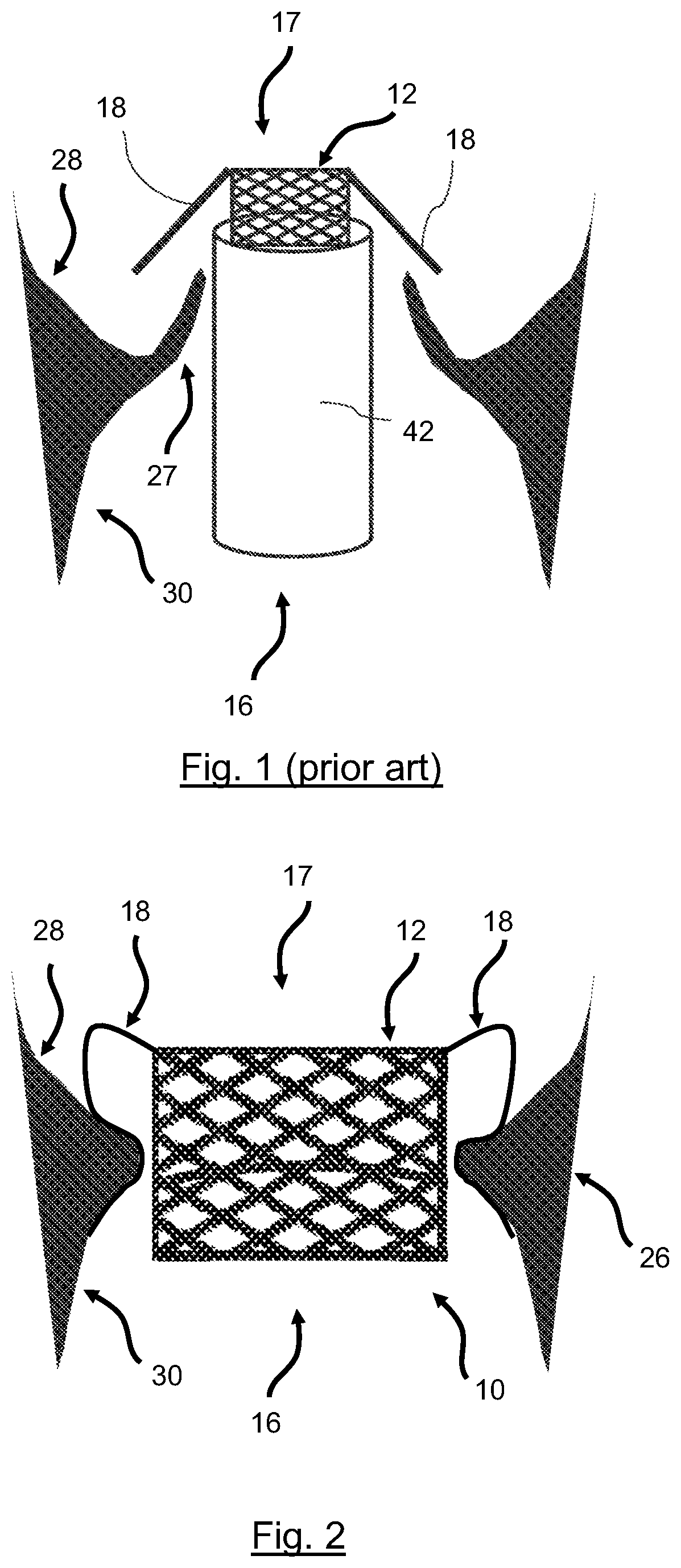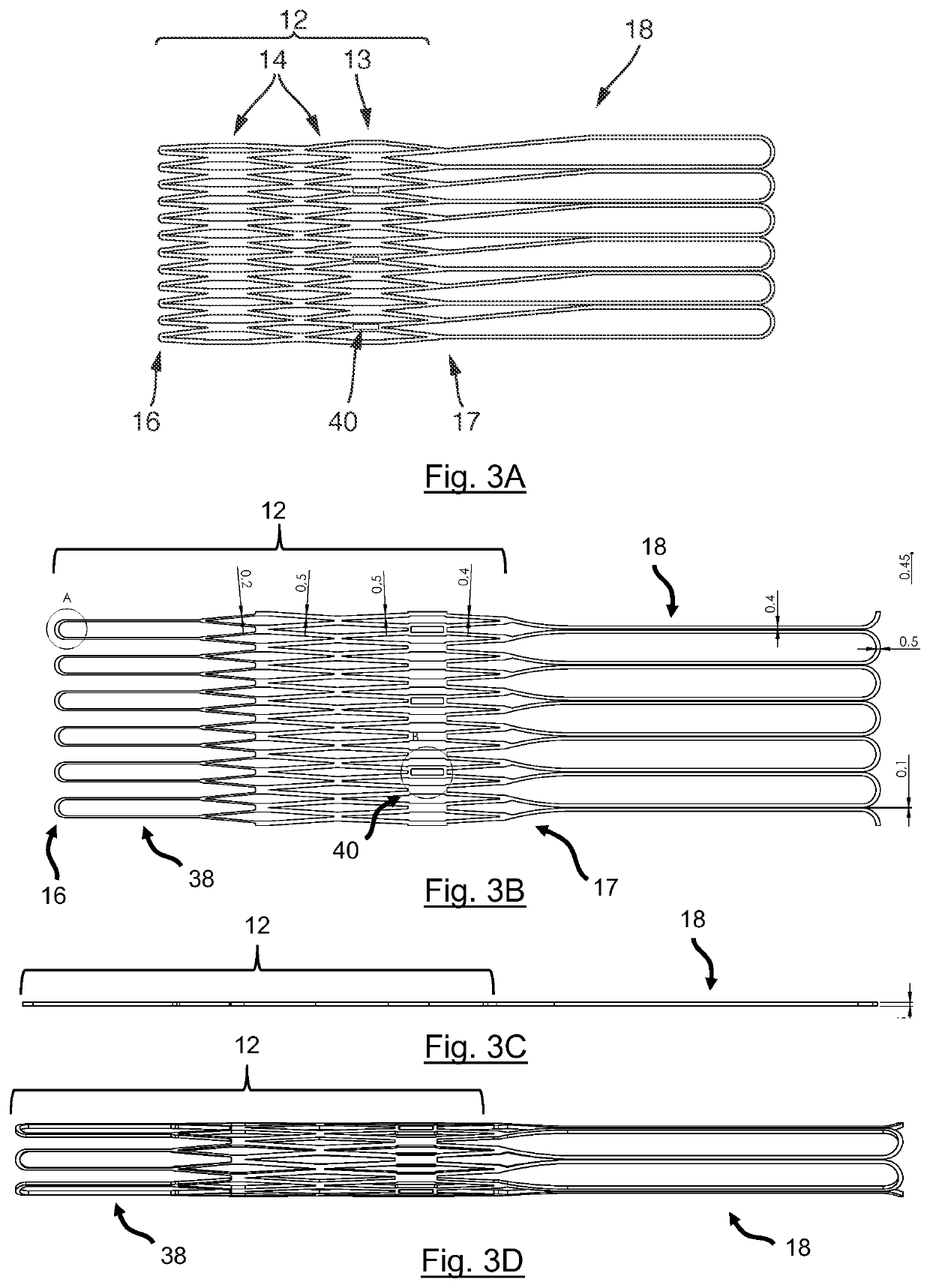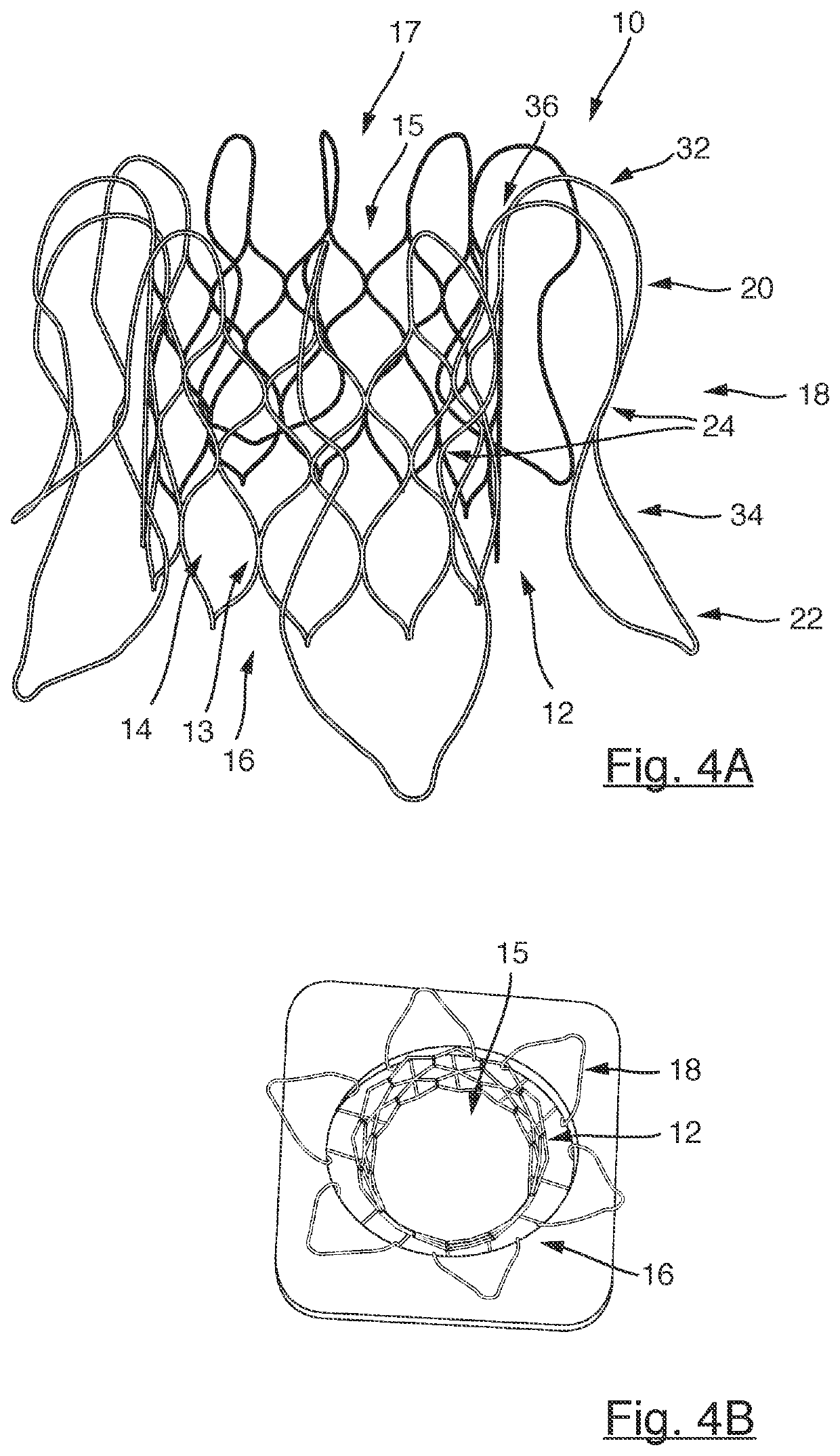Stent device for a prosthetic heart valve
- Summary
- Abstract
- Description
- Claims
- Application Information
AI Technical Summary
Benefits of technology
Problems solved by technology
Method used
Image
Examples
Embodiment Construction
[0102]In the following, the invention will be explained in more detail with reference to the accompanying figures. In the Figures, corresponding elements are denoted by identical reference numerals and repeated description thereof may be omitted in order to avoid redundancies.
[0103]In FIG. 1 a graphical representation of a prior art embodiment of a prosthetic heart valve positioned within a tricuspid valve is shown. Accordingly, a prosthetic heart valve is positioned within the tricuspid valve by means of a delivery system 42, e.g. a catheter or sheath. The prosthetic heart valve is positioned such that the body 12 or framework of the prosthetic heart valve is oriented in a longitudinal direction from a proximal end 16 to a distal end 17 of the tricuspid valve. Accordingly, upon deployment or expansion of the prosthetic heart valve, the support arms 18 of the prosthetic heart valve grasp the leaflets 27 of the tricuspid valve, thereby forming ventricular stabilizers. The support arm...
PUM
 Login to View More
Login to View More Abstract
Description
Claims
Application Information
 Login to View More
Login to View More - R&D
- Intellectual Property
- Life Sciences
- Materials
- Tech Scout
- Unparalleled Data Quality
- Higher Quality Content
- 60% Fewer Hallucinations
Browse by: Latest US Patents, China's latest patents, Technical Efficacy Thesaurus, Application Domain, Technology Topic, Popular Technical Reports.
© 2025 PatSnap. All rights reserved.Legal|Privacy policy|Modern Slavery Act Transparency Statement|Sitemap|About US| Contact US: help@patsnap.com



